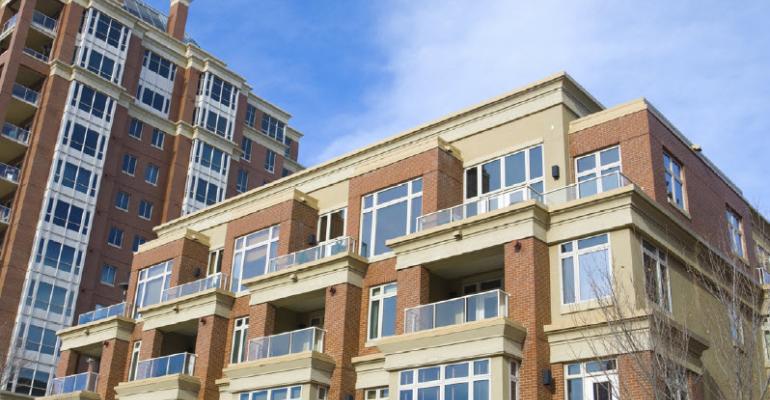Sponsored by Freddie Mac Multifamily
By David Brickman
2017 was another excellent year for the multifamily market. For Freddie Mac, it was a year filled with new products, numerous records and continued innovation. This year, we are poised to purchase $70 billion and securitize $60 billion in loans—both new records. And our success will extend beyond those broad numbers to a variety of our programs and products that are designed to bring liquidity to every corner of the multifamily market.
For example, our Small Balance Loan (SBL) program, which finances smaller properties, primarily those containing five to 50 units, is slated to finance a record $6 billion in volume. Our Green Advantage offering, which provides better pricing on loans that make energy and water efficiency improvements to rental properties, will also finance more than $15 billion, a dramatic increase from the program’s inception last year. Finally, our Targeted Affordable Housing platform, which focuses on subsidized housing, is also projected to have a record year in terms of volume, financing more than $5 billion and over 90,000 units of housing affordable to low- and very low-income households.
On the securities side, our issuance calendar was robust and we saw bond spreads tighten. We continued to introduce new credit risk-transfer innovations that help us adapt to changing investor demands and lower the cost of capital for properties. For example, we introduced the ML-Deal, the first-ever securitization of a tax-exempt loan portfolio—which allowed us to reduce rates on our tax-exempt loans. Our K- and SB-Deal offerings continue to be immensely popular. Over 250 investors participated in the K-Deal program, with an average of more than 30 different investors on each deal. In addition, more than 200 investors participated in the SB-Deal program. Moreover, we continue to be the leaders in innovative risk distribution. Our newly introduced KT-Deals, for example, transfer the credit risk on loans awaiting sale into other K-Series securitizations.
There were headwinds in 2017. An uncertain political environment slowed first quarter activity, and an influx of class-A luxury supply in some very high-cost markets led to a slight uptick in vacancy rates and a modest slowdown in rent growth in those markets. But strong market fundamentals overall—demographic trends, population growth and changing consumer preferences—allowed us and the market to overcome those frictions.
In 2018, we expect these trends to continue fueling a strong multifamily market. Our latest renter research found that an increasing number of renters across demographic groups are satisfied with their living situation and consider renting the most affordable option for the foreseeable future. In fact, 76 percent of renters believe it is the more affordable option—up from 68 percent in March, 2017. On its surface this may seem surprising, as economic data and our own research point to declining affordability in rental markets. The explanation is simple: all housing, whether owned or rented, is becoming more expensive – it is just rental that remains the more affordable of the two. Moreover, multifamily supply coming on to the market is slowing—in terms of permits and starts. And there continues to be a housing shortage of over 400,000 units per year, including single-family homes— keeping demand high.
Even the industry itself agrees. In a recent Freddie Mac survey, a significant majority of industry participants believe that increasing demand and a growing population will continue to fuel the rental housing market.
Simply put, we do not see these trends going away. As we look to 2018, we believe demand for multifamily units will continue to grow and with it, so will the market.
David Brickman is the head of Freddie Mac Multifamily, the leading provider of multifamily debt capital in the U.S., and a frequent spokesperson on the condition, challenges and future of the nation’s multifamily housing.
Learn more at www.freddiemac.com/multifamily.

